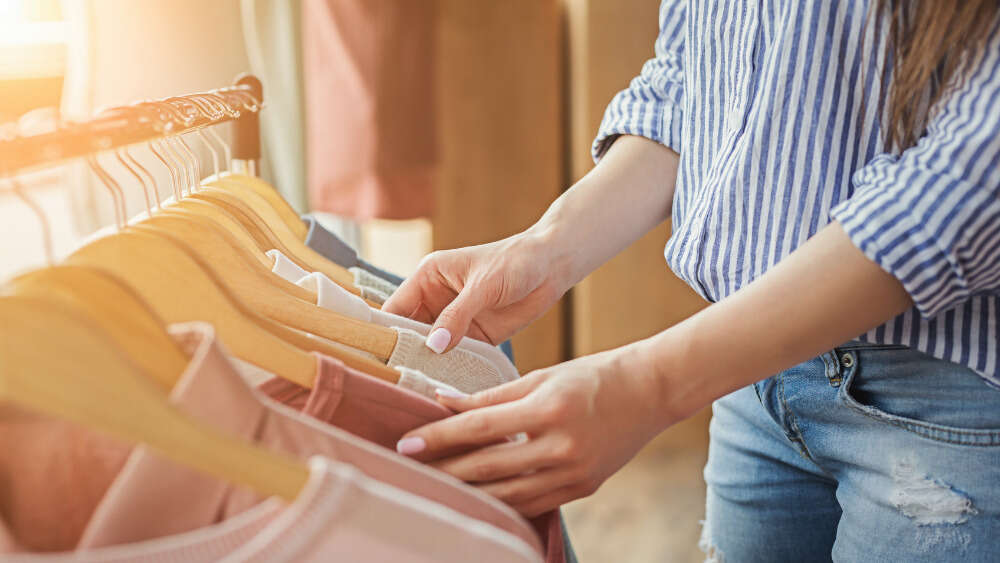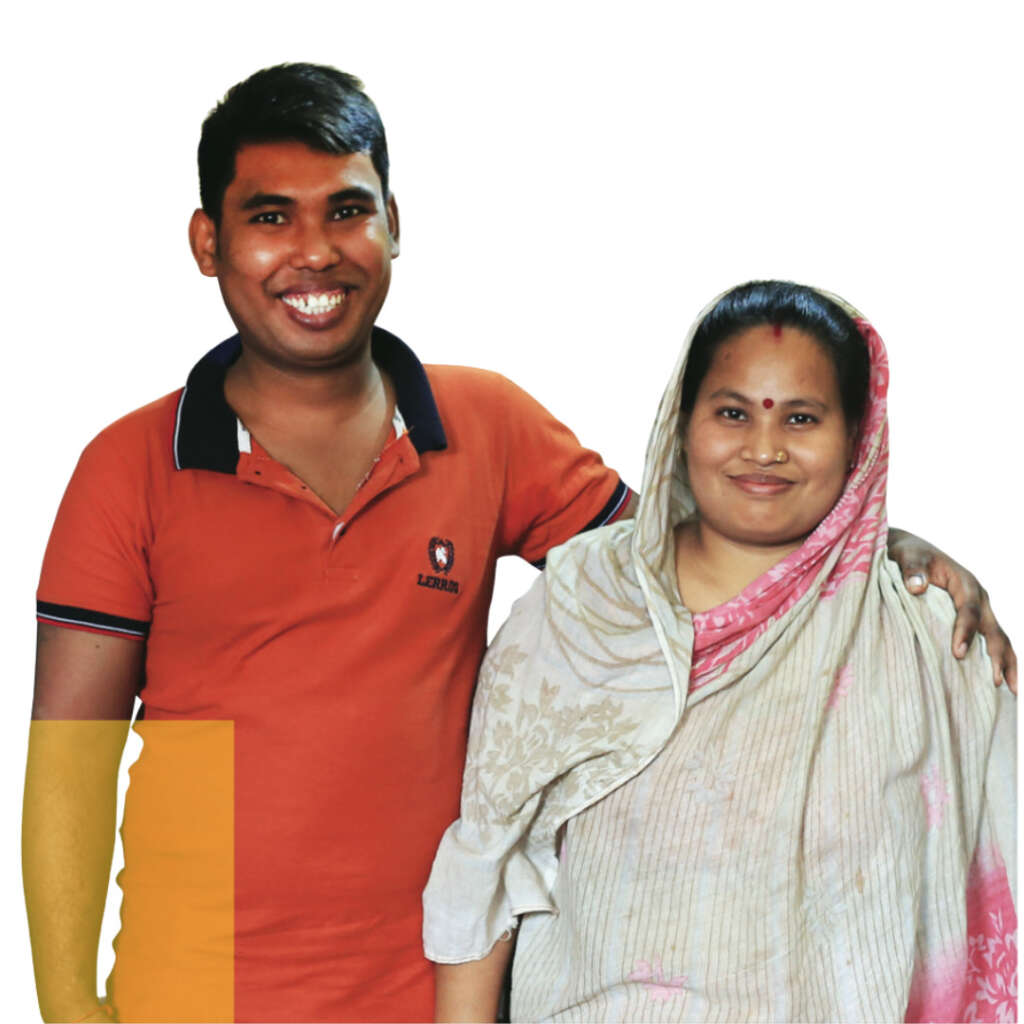The 2021 Ethical Fashion Guide released by Baptist World Aid Australia yesterday makes it so easy to shop ethically, grading 420 brands on their efforts to reduce worker exploitation and environmental degradation in their supply chains.
Here are five things to love about it from a first look.
1. The Ethical Fashion Guide is SO easy to use
Most of us would like to shop more ethically but can find the process overwhelming. Every year, Baptist World Aid (BWA) and Tearfund New Zealand make it all so much easier.
The annual guide comprehensively surveys more than 98 companies representing a staggering 420 brands across 18 facets of their supply chains. It broadly covers policies and governance, tracing and risk, supplier relationships and human rights monitoring, worker empowerment, and environmental sustainability.
Each company receives a grade from A+ to F based on the evidence available either publicly or directly reported to the Ethical Fashion Report research team.
These grades reflect the company’s efforts to minimise forced labour, worker exploitation, and environmental degradation in supply chains. They are an indication of where companies sit compared to their peers and the industry average.
This year, the team has put extra effort into also making the guide easy to access online. All you need to do is search for your favourite brand – or in the hardcopy of the guide – and you have everything you need to make ethical fashion decisions.
2. The guide provides easy steps to becoming a more ethical consumer
Four companies scored an A+ in this year’s guide: Etiko, Joyya, Mighty Good Basics, and Outland Denim.
There are also ten companies whose raw scores improved more than 12 per cent: Abercrombie & Fitch, Fruit of the Loom, Hotsprings, Hugo Boss, Lacoste, Macpac, Mighty Good Basics, Mosaic Group, Pentland Brands, and Showpo.
But buying from these guys is not the only thing we can do to become more ethical consumers.
The guide also contains “5 As” – simple steps anyone can take to move towards a more ethical future, regardless of where they are on their ethical consumer journey.
These include a quiz to help you identify where you are at, a range of resources to grow in your understanding, and a super-easy-to-use tool that enables you to contact your favourite brand and find the words to encourage them to do better.
3. BWA have analysed all that data and drawn out critical insights about the clothes we buy
The Ethical Fashion Guide has fashioned essential insights drawn from the data gathered by its researchers into bite-sized facts that can help us increase our understanding of the many ways unethical practices creep into garment manufacturing.
For example, did you know that only 15 per cent of companies have a public commitment to pay workers a living wage? Or that 36 per cent of companies don’t know where any of their raw materials come from?
Alongside the guide, BWA has released a 2021 Ethical Fashion Report that provides loads more detail on what is happening in the industry.
Some of these show encouraging progress. For example, the report says: “Following the trend from recent years, we have witnessed continual improvement from the industry when it comes to foundational measures, such as establishing the right codes of conduct and policies, and tracing supply chains.”
A closer look shows that a growing number of companies are covering three “basics” – 41 per cent are publishing full final stage supplier lists, up from 37 per cent in 2019; 69 per cent are actively working to trace their raw material suppliers – a big jump from 48 per cent in 2019; and an impressive 87 per cent are starting to use sustainable fibres, up from just 61 per cent in 2019.
But other insights reveal precisely where the industry needs to improve.
“Key measures that deliver outcomes for workers remain stuck at low levels, such as payment of living wages, comprehensive remediation when problems are identified, and active support for collective bargaining,” the report summarises.
A paltry 15 per cent of companies were able to demonstrate paying a living wage in any final stage facilities, and only a tiny 4 per cent showed paying it in all final stage facilities.
4. This year’s report also gives us a gauge on the industry overall (rather than just comparing brands against each other)
In a slightly depressing but eye-opening innovation, this year BWA has published the underlying raw average score for the industry – which shows plenty of room for improvement.
“At 33.6 out of 100, this average may startle some readers. It is broadly consistent with the trends from recent years – and in fact follows slow but continuous improvement over the eight years since we started publishing this report,” the report notes. “It is nevertheless a reminder that there is still a long way to go.”
5. The report reminds us why being ethical consumers matters
While the report and guide are filled with details about brands, the real focus of the initiative is improving the welfare of the people in the industry.
The report says it this way:
“We know that each actor in the fashion industry – from garment workers to suppliers, fashion brands to governments, retail employees to customers–has a role to play. This report shows that the work has begun, but also that there is much yet to do.
“Together, we must redouble our efforts to create a fashion industry that provides economic dignity and opportunity to its workers and enhances the sustainability and resilience of the planet.”
So, the report highlights the lives of real people.
Take Sarika in Dhaka, Bangladesh. For four years, Sarika has worked in a garment factory as a helper in the sewing department. The factory Sarika works in employs 3000 workers, including her husband, an operator of dyeing machines.
Sewing helpers like Sarika work long hours, six days of the week. And, although Sarika is paid for overtime, she feels she doesn’t really have a choice. “If they ask us to work 24 hours, then I will have to work 24 hours,” she says. Nonetheless, Sarika reportedly enjoys her job and considers herself fortunate.
We learn that when the COVID pandemic hit, millions of workers lost their jobs, while her wage was reduced by 40 per cent for only one month, then returned to normal. She has friends at the factory and takes pride in her work, aspiring to become an operator one day like her husband. ‘I am good at pairing the serial numbers with the “bodies” [garments]. So, everyone praises me for that.”
The report says:
“Sarika hopes to soon return to her village, build a home, and raise her child, who currently lives with his grandmother. Her husband will need to continue working at the factory if they are to afford their child’s schooling, and for Sarika to be home with him. ‘Everyone has dreams. I want to work only for two more years and don’t want to work anymore. That is why I want to work more hours now whether they make me work 12 hours or 24 hours.’ These are the difficult choices workers in the garment industry must make.”
Sarika’s story, along with others included throughout the report, provide a sobering reminder of why becoming more ethical consumers matters.
Email This Story
Why not send this to a friend?




